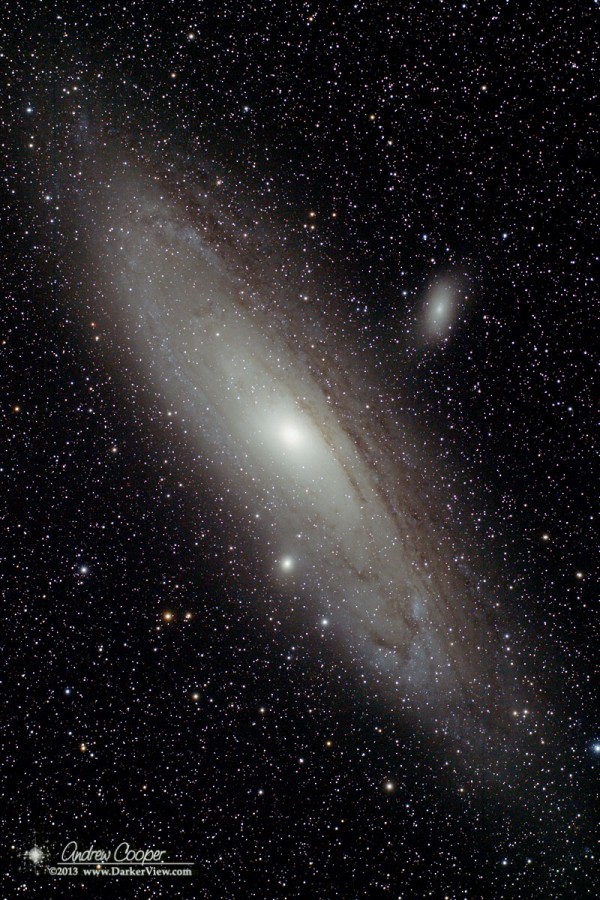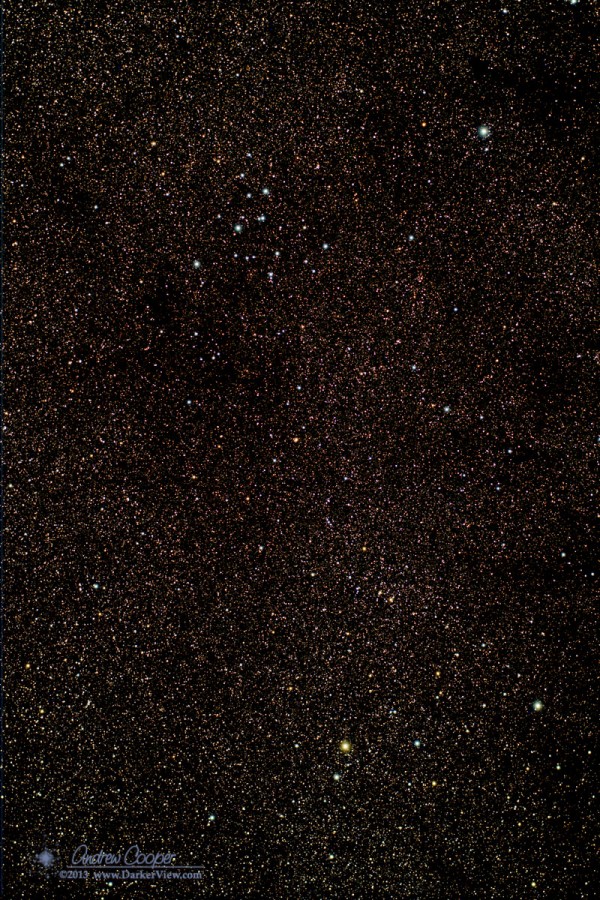Yes, the 6D on a telescope! Just getting things setup for some possible comet shooting. The clouds over Hawai’i may actually be breaking up after a week of very wet weather.

When you want to see the stars, find someplace dark
Peering into the dark with a camera
After our comet ISON observing session I have been asked what it is like to take a comet photograph with Keck. An apt question as all of the recent observers were taking spectra, not photos.
The answer? Not very pretty.
A few years back Greg Wirth and I took some frames of comet Hartley 2 with Keck 2. When I processed the frames into a color photo the results were less than impressive.
Comets are big. While the nucleus is quite small, we do not see the nucleus even with the enormous power of a 10 meter telescope. It is hidden in the coma and quite dark, the average nucleus is a shade of dark gray equivalent to charcoal.
The coma and tail are very extended, much larger than the field of view of the telescope, thus the entire frame is inside the coma. The photo of Hartley 2 Greg and I took was no exception.. The image is notable for its complete lack of any interesting structure. There are no jets, shells or other inner coma detail visible. The tail is simply a general brightening to the southwest (lower right in this image).
Small telescopes, in the hands of amateurs, are going to produce the prettiest images of comets. With fields of view measured in degrees, not arcminutes, the comet is going to be seen in all its glory.

I will probably make my first attempt to photograph C/2012 S1 ISON this coming weekend. A couple reasons for waiting… The bright Moon will have moved out of the morning sky by then. The comet, currently around magnitude ten, is brightening rapidly.
On the other hand the comet is plunging towards the Sun, rising later each day. Wait much longer and the photographic opportunity will slip away, at least until after Thanksgiving, when the comet will again appear after perihelion.
In the meantime, one of my favorite comet photos from years past…

A nice bit of Big Island after dark eye candy from German photographer Michael Kunze.
Hawaiian Sky – Mauna Kea | Kilauea volcano from Michael Kunze on Vimeo.
So I shot M31… yet again. I admit I enjoy this target, it is just so much fun. I always think I can do a little bit better. It is color balance that has been my bugaboo lately, I have really been playing with my technique to achieve a decent color balance. Something aesthetically pleasing and something that bears at least a little resemblance to reality. I understand how objective these criteria are, but still… I try.
Be sure to click on the image to get the large version…

The idea is to take a photo of a bright deep sky object and the surrounding region. The result should be an impressive starfield with something bright to give the image some punctuation. This does not always work.
In the previous image, Mirfak and Mellotte 20, the idea worked pretty well. Bright stars highlight a rich Milky Way starfield in Perseus. In this next image I processed the plan did not quite work as well. The target is the bright open cluster M39. At magnitude 4.6 I thought the cluster would appear brighter against the surrounding starfield. In this case the component stars are somewhat dimmer, thus the effect is not as dramatic.
There is still a lot of material to process from OSP, we shall see what worked and what did not.
